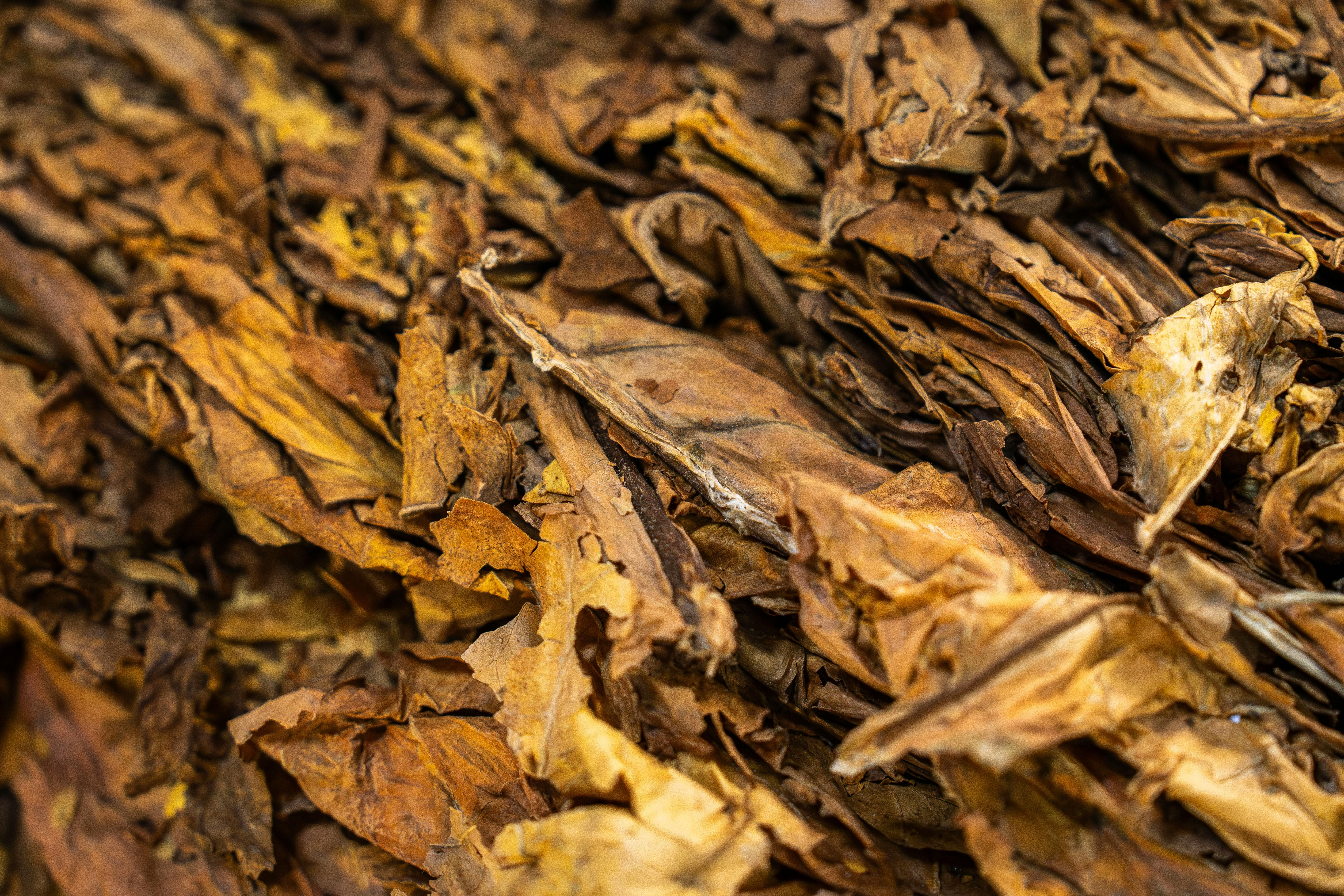
Health Risks of Using Hookahs for Women in 2024
Hookahs, also known as water pipes or shisha, have gained popularity over the years, especially among women who view them as a less harmful alternativ...

Snuff, a type of smokeless tobacco, might seem like a safer alternative to smoking cigarettes, especially if you’re looking to avoid the obvious risks of smoke inhalation. But don’t be fooled—snuff is far from safe. This powdered tobacco, used either by inhaling through the nose or placing it in the mouth, still contains nicotine and a bunch of other harmful chemicals. For women, the risks are especially concerning.
In 2024, it’s more important than ever to understand the dangers of snuff. Let’s dive into what snuff is and the specific health risks it poses for women.

Snuff is tobacco that has been finely ground into a powder. It comes in two forms: dry and moist. Dry snuff is usually inhaled through the nose, while moist snuff is placed between the gum and cheek. You don’t have to smoke it, but make no mistake—it’s still dangerous.
Here are some of the major health risks of using snuff, based on the latest research.
Snuff use can dramatically increase the risk of developing cancer in the mouth and throat.
How Snuff Harms Your Health: Snuff is loaded with tobacco-specific nitrosamines (TSNAs), which are chemicals known to cause cancer. When you use snuff, these harmful substances come into direct contact with your gums and tissues inside your mouth. Over time, this can lead to cancerous changes, particularly in the mouth, throat, and esophagus. A study in the NIH found that women who use snuff are almost four times more likely to develop mouth or throat cancer compared to non-users.
What You Should Know: If you use snuff, you’re putting yourself at a much higher risk of developing serious cancers in the mouth and throat. Regular check-ups with a dentist and doctor are essential, but the best way to protect yourself is to quit using snuff altogether.
Snuff doesn’t just taste bad—it can do a number on your teeth and gums, too.
The Damage It Can Do: Snuff can cause a host of oral health problems. It irritates your gums, leading to inflammation and gum recession. This can eventually cause your gums to pull away from your teeth, increasing the risk of tooth loss. Plus, snuff use is linked to leukoplakia, which are white patches in the mouth that can turn into cancer over time. Women who use snuff are much more likely to experience severe gum disease and tooth decay. Bad breath and stained teeth are also common problems.
Heads Up: Good oral hygiene and regular dental visits are important, but quitting snuff is the most effective way to avoid these painful and potentially dangerous issues.
Using snuff can mess with your heart and blood pressure, putting you at risk for serious conditions.
What’s the Risk: Snuff contains nicotine, which is a stimulant. When you use snuff, nicotine gets into your bloodstream, raising your heart rate and blood pressure. Over time, this can lead to hypertension (high blood pressure), which is a major risk factor for heart disease and stroke. Women who use snuff have been shown to have a higher risk of heart problems compared to those who don’t use tobacco.
Key Takeaway: Even though snuff doesn’t involve inhaling smoke, the nicotine still poses a significant threat to your heart health. Regular health check-ups are crucial if you use snuff, but quitting is the best way to protect your heart.

Snuff can have serious effects on women’s reproductive health.
Why It’s a Concern: Nicotine and other chemicals in snuff can interfere with hormone levels, disrupt menstrual cycles, and even reduce fertility. For pregnant women, the risks are even more alarming. The chemicals in snuff can cross the placenta and affect fetal development, increasing the chances of complications like low birth weight, premature birth, and even stillbirth. A study in the Nature found that snuff use during pregnancy is linked to a higher risk of these complications.
Important to Remember: If you’re pregnant, planning to become pregnant, or simply concerned about your reproductive health, avoiding snuff is a must. Talk to your healthcare provider about quitting and finding safer alternatives.
Snuff might seem harmless, but it’s incredibly addictive.
What Makes It So Addictive: Snuff contains high levels of nicotine, which is one of the most addictive substances out there. Using snuff regularly can quickly lead to nicotine addiction, making it hard to quit once you start. Many women find themselves stuck in a cycle of cravings and withdrawal symptoms, like irritability, anxiety, and trouble concentrating. The addiction can be just as strong as with cigarettes or other forms of tobacco.
What You Need to Know: If you’re trying to quit snuff but finding it tough, know that you’re not alone. Seeking help from a doctor, counselor, or support group can make a big difference. There are also nicotine replacement products and medications that can help manage cravings and withdrawal.
Quitting snuff can be tough, especially if it’s become a regular part of your routine. However, with the right tools and support, it’s entirely possible to break free from this harmful habit. Here are some concrete steps and resources available in the US to help you quit snuff for good:
Choosing a specific date to quit can help you mentally prepare for the change. Mark this date on your calendar and plan out the steps you’ll take to quit. For example, you could decide to cut back gradually before your quit date or go cold turkey. Write down your reasons for quitting and keep them somewhere visible to remind you of your goals.
Identify the situations, places, or emotions that trigger your urge to use snuff. Is it stress, boredom, or social situations? Once you know your triggers, you can create strategies to avoid or manage them. For instance, if you tend to use snuff when stressed, practice deep breathing exercises, go for a walk, or call a friend for support instead.
Nicotine replacement therapies like nicotine patches, gum, or lozenges can help reduce cravings and withdrawal symptoms. These products provide a controlled dose of nicotine without the harmful chemicals found in snuff. In the US, NRT products are widely available over-the-counter at pharmacies like CVS, Walgreens, and Walmart, as well as online. Always follow the instructions on the packaging, and consider consulting your doctor to find the best option for you.
Many states in the US offer free or low-cost tobacco cessation programs to help people quit. These programs provide resources like counseling, support groups, and sometimes free or discounted NRT products. For example, 1-800-QUIT-NOW is a free telephone quitline available across the US that connects you to trained counselors who can provide personalized support and guidance.
Talking to a healthcare provider can make a big difference when you’re trying to quit snuff. Your doctor can provide advice, prescribe medications like bupropion (Zyban) or varenicline (Chantix) to help reduce cravings, and refer you to a specialist if needed. Behavioral counseling from a psychologist or a licensed therapist can also help you develop coping strategies and address any underlying issues that contribute to your tobacco use.
Connecting with others who are also trying to quit can provide encouragement and motivation. Support groups can offer a sense of community and shared experience, making the quitting process feel less isolating. Look for local support groups in your area or online communities such as the BecomeAnEX website, a free resource developed by the Truth Initiative that offers tools, resources, and an online community to help you quit.
Finding a quit buddy—a friend, family member, or coworker who wants to quit tobacco—can also be incredibly helpful. You can support each other, share tips, and hold each other accountable.
Keeping yourself busy can help take your mind off snuff and reduce cravings. Engage in activities that keep your hands and mind occupied, such as knitting, painting, or playing a musical instrument. Physical activities like jogging, swimming, or yoga can also help relieve stress and improve your mood, making it easier to stick to your quitting plan.
Celebrate your achievements, no matter how small. Each day without snuff is a win. Set milestones, such as going one day, one week, or one month without snuff, and reward yourself with something special, like a nice meal, a movie night, or a new book. Recognizing your progress can boost your motivation to keep going.
Several apps are designed to help people quit tobacco by tracking progress, offering tips, and providing encouragement. For example, the QuitGuide app, created by the National Cancer Institute, is a free app that helps users understand their smoking patterns, set goals, and stay motivated with helpful tips and support. The QuitSTART app, also from the National Cancer Institute, is tailored for younger users and offers customized tips and reminders.
A: Snuff is a type of smokeless tobacco that comes in a powdered form. It can be either dry or moist. Dry snuff is usually inhaled through the nose, while moist snuff is placed between the gum and cheek. Both forms allow nicotine and other chemicals to be absorbed through the mucous membranes without the need for smoking.
A: No, snuff is not a safe alternative to smoking cigarettes. While it doesn’t involve inhaling smoke, snuff still contains nicotine and harmful chemicals that can cause serious health problems, including cancer, heart disease, and dental issues.
A: Yes, snuff use can significantly increase the risk of several types of cancer, particularly in the mouth and throat. The tobacco-specific nitrosamines (TSNAs) found in snuff are potent carcinogens. Regular use of snuff can lead to a higher chance of developing oral, esophageal, and pancreatic cancers.
A: Snuff can cause severe damage to oral health. It can lead to gum irritation, receding gums, tooth decay, and even tooth loss. Snuff use is also associated with the development of leukoplakia, white patches in the mouth that can become cancerous over time.
A: Yes, snuff use can negatively impact cardiovascular health. Nicotine in snuff raises heart rate and blood pressure, increasing the risk of heart disease and stroke. Even without the smoke, snuff can contribute to the development of hypertension and other cardiovascular issues.
A: Snuff can have serious effects on reproductive health. It can disrupt hormone levels, menstrual cycles, and reduce fertility. Pregnant women using snuff are at a higher risk of complications, such as low birth weight, preterm birth, and stillbirth. The harmful chemicals in snuff can affect fetal development and lead to adverse pregnancy outcomes.
A: Yes, snuff is highly addictive due to its nicotine content. Nicotine addiction can develop quickly with regular use, leading to cravings, withdrawal symptoms, and difficulty quitting. Many women find themselves dependent on snuff, even when they want to quit.
A: Signs of snuff addiction include frequent cravings for snuff, using it despite knowing the health risks, experiencing withdrawal symptoms like irritability and anxiety when not using it, and finding it challenging to stop or cut back on use.
A: Quitting snuff can be challenging, but there are several effective strategies. Setting a quit date, using nicotine replacement therapies (NRT), seeking professional help, joining support groups, and finding new activities to replace snuff use are all helpful steps. There are also free resources like the 1-800-QUIT-NOW quitline in the US, which offers support and guidance for those looking to quit.
This article is for informational purposes only and is not a substitute for professional medical advice. Always consult your doctor or a healthcare professional if you need help quitting or have concerns about your health.
Using snuff might seem like a safer choice compared to smoking, but the health risks are real, especially for women. From increasing the risk of mouth and throat cancer to causing serious dental problems, heart issues, and reproductive complications, the dangers of snuff are significant. If you’re using snuff, consider the risks and take steps to quit. There are plenty of resources and strategies available to help you make a healthy change. Remember, it’s never too late to quit and start taking care of your health.

Hookahs, also known as water pipes or shisha, have gained popularity over the years, especially among women who view them as a less harmful alternativ...

The connection between what we eat and how we feel is powerful—certain foods provide the nutrients our brain needs to support mood, energy, and overal...

ADHD is influenced by a mix of genetic, environmental, and lifestyle factors, and while medication and therapy are common treatments, dietary choices ...

Social gatherings often mean a spread of carb-heavy foods and tempting desserts that can make sticking to the carnivore diet feel tricky. But with a b...

The carnivore diet is often seen as straightforward: eat meat, keep it simple. But adapting it seasonally can bring freshness, variety, and local flav...